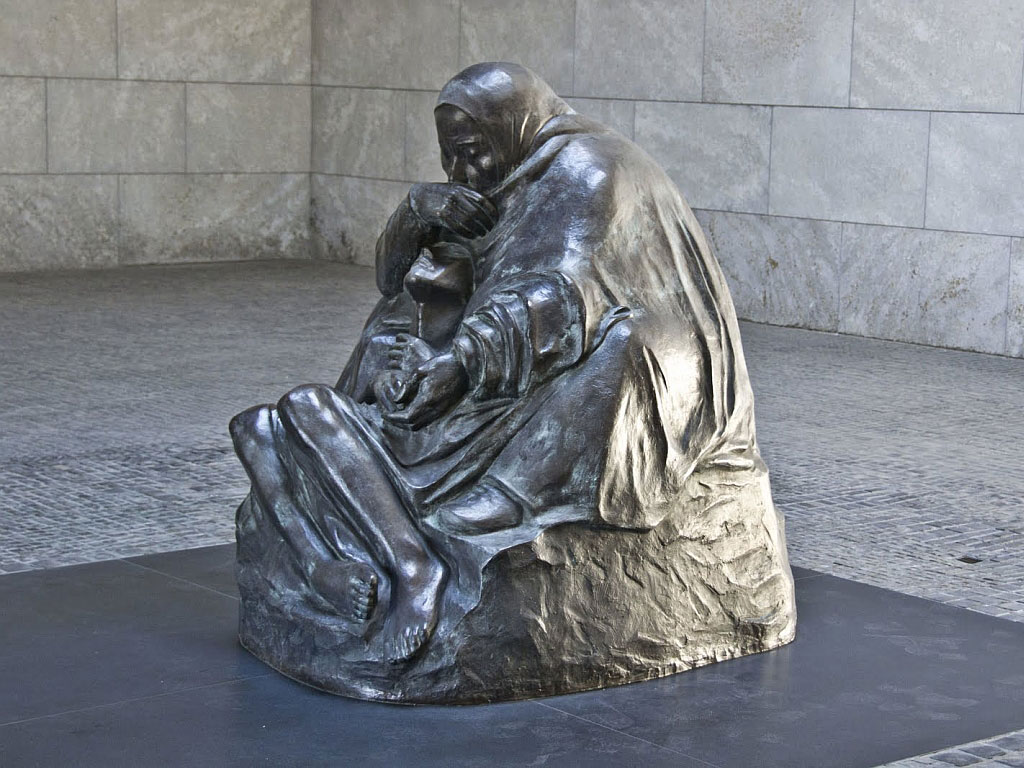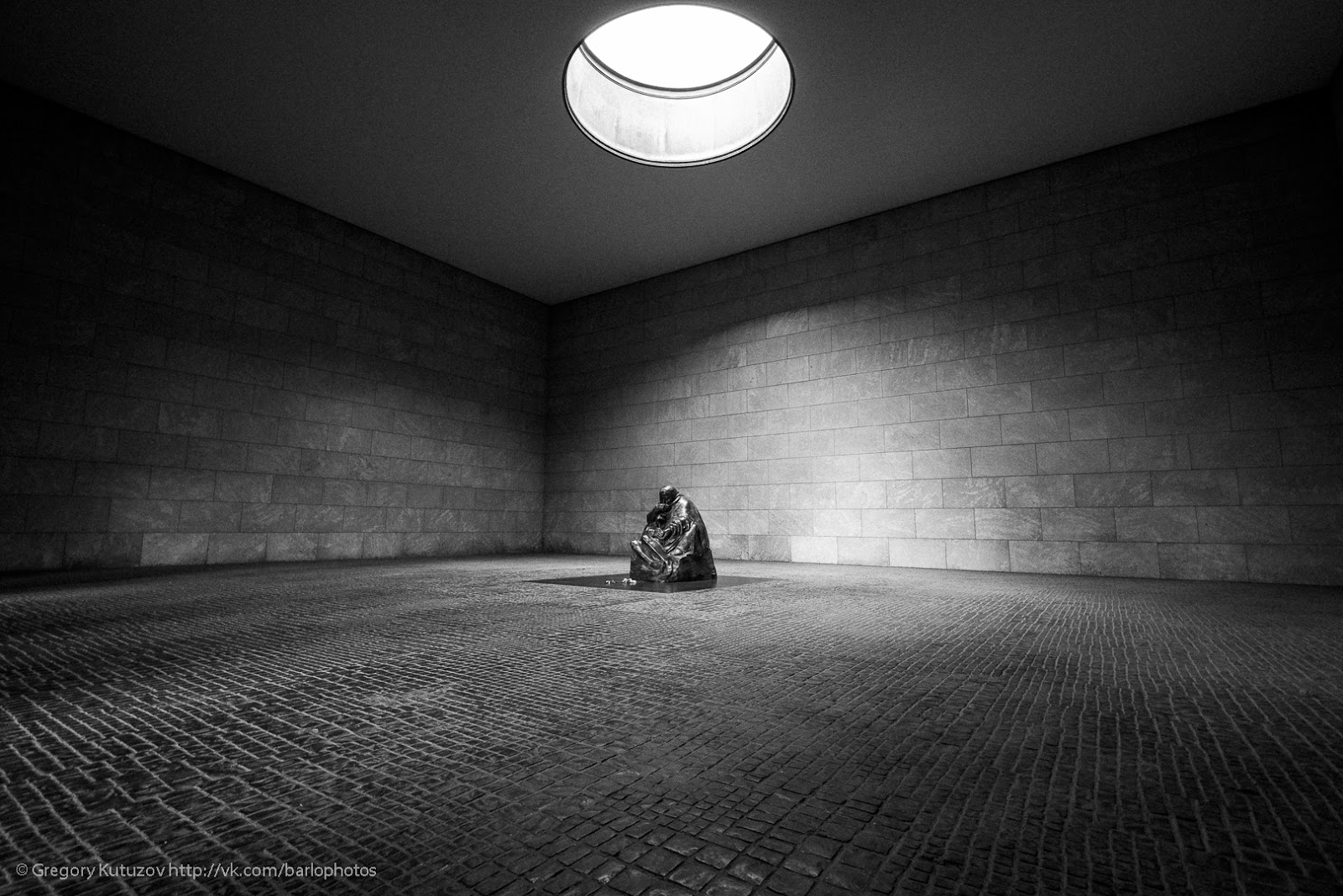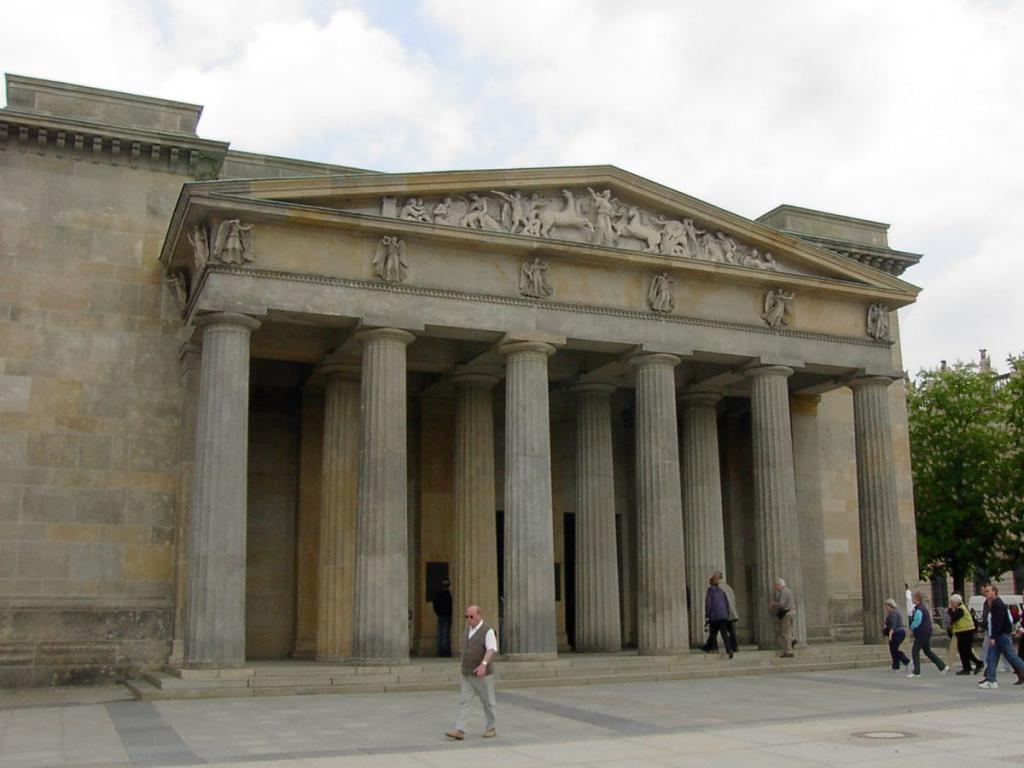The Neue Wache (English: New Guardhouse) is a building in Berlin, now the capital of Germany, and formerly of the Kingdom of Prussia, and the DDR. It serves as the "Central Memorial of the Federal Republic of Germany for the Victims of War and Dictatorship". It is located on the north side of the Unter den Linden boulevard in the central Mitte district. Dating from 1816, the Neue Wache was designed by the architect Karl Friedrich Schinkel and is a leading example of German Neoclassical architecture. Originally built as a guardhouse for the troops of the crown prince of Prussia, the building has been used as a war memorial since 1931.
King Frederick William III of Prussia ordered the construction of the Neue Wache as a guardhouse for the Königliches Palais (Royal Palace), his palace across the road, to replace the old Artillery Guardhouse. He commissioned Schinkel, the leading exponent of neoclassicism in architecture, to design the building: this was Schinkel's first major commission in Berlin. The Neue Wache was inaugurated on 18 September 1818 by the Prussian 1st Guards Grenadiers on occasion of the official visit of Tsar Alexander I of Russia.Located between the Zeughaus and the Humboldt University, the plain building is characterised by four massive corner risalits and a portico of Doric columns. Schinkel wrote of his design: "The plan of this completely exposed building, free on all sides, is approximately the shape of a Roman castrum, thus the four sturdier corner towers and the inner courtyard." The statuary in the tympanum is intended as a memorial to Prussia's role in the Napoleonic Wars, whose final stage is known in Germany as the Wars of Liberation. It shows Nike, the goddess of victory, deciding a battle.
The building served as a royal guard house until the end of World War I and the fall of the monarchy in the German Revolution of 1918–19. In 1931 the architect Heinrich Tessenow was commissioned by the Free State of Prussia to redesign the building as a memorial to commemorate those who died in the Great War. Tessenow converted the interior into a memorial hall centered around a black granite block with an oak wreath designed by the sculptor Ludwig Gies, situated under an oculus (circular skylight). The Neue Wache was then known as the "Memorial of the Prussian State Government". After the Nazi Machtergreifung the building played a vital role as the site of the annual Heldengedenktag celebrations held by the Nazi Party and the Wehrmacht armed forces. The Neue Wache was heavily damaged by bombing and artillery during the Battle of Berlin in last months of World War II.
After the war, the Mitte district was located within the Soviet sector of Allied-occupied Berlin, and from 1949 was part of East Berlin, capital of the German Democratic Republic (GDR). Prior to the 1951 World Festival of Youth and Students, the East German leader Walter Ulbricht had two neoclassical marble statues of Gerhard von Scharnhorst and Friedrich Wilhelm Bülow by Christian Daniel Rauch removed from the sides of the portico (positioned on the south side of Unter den Linden since 2002).From 1957 the Communist authorities had the Neue Wache rebuilt and reopened in 1960 as a "Memorial to the Victims of Fascism and Militarism". In 1969, the 20th anniversary of the GDR, a glass prism structure with an eternal flame was placed in the centre of the hall. The remains of an Unknown Soldier and of a nameless Nazi concentration camp victim were enshrined in the building. Two soldiers of the Friedrich Engels Guard Regiment served as permanent honor guards, a Guard Mounting ceremony was held every Wednesday and Saturday, becoming a major tourist attraction.
After German reunification, the Neue Wache was again rededicated in 1993, as the "Central Memorial of the Federal Republic of Germany for the Victims of War and Dictatorship." At the personal suggestion of Chancellor Helmut Kohl, the GDR memorial piece was removed and replaced by an enlarged version of Käthe Kollwitz's sculpture Mother with her Dead Son. The pietà-style sculpture is directly placed under the oculus, and so is exposed to the rain, snow and cold of the Berlin climate, symbolizing the suffering of civilians during World War II.












